
Riding an e-bike in the snow can be an exhilarating experience, but it also poses unique challenges. The combination of electric power and snowy conditions requires a different approach to make sure you’re staying safe while having a blast. Here are ten tips to help you navigate the winter wonderland on your e-bike this year.
1. Choose the Right Tires
Snow and ice demand tires with better grip.
Those street tires that you used all summer and fall sure were great for extra grip in the corners on asphalt, but they have the opposite effect on snow and ice.
Knobbie mountain bike tires or fat bike tires are better for riding through snow, but icy conditions are best served with actual studded tires. They can often be found for between $50 on the low end and.
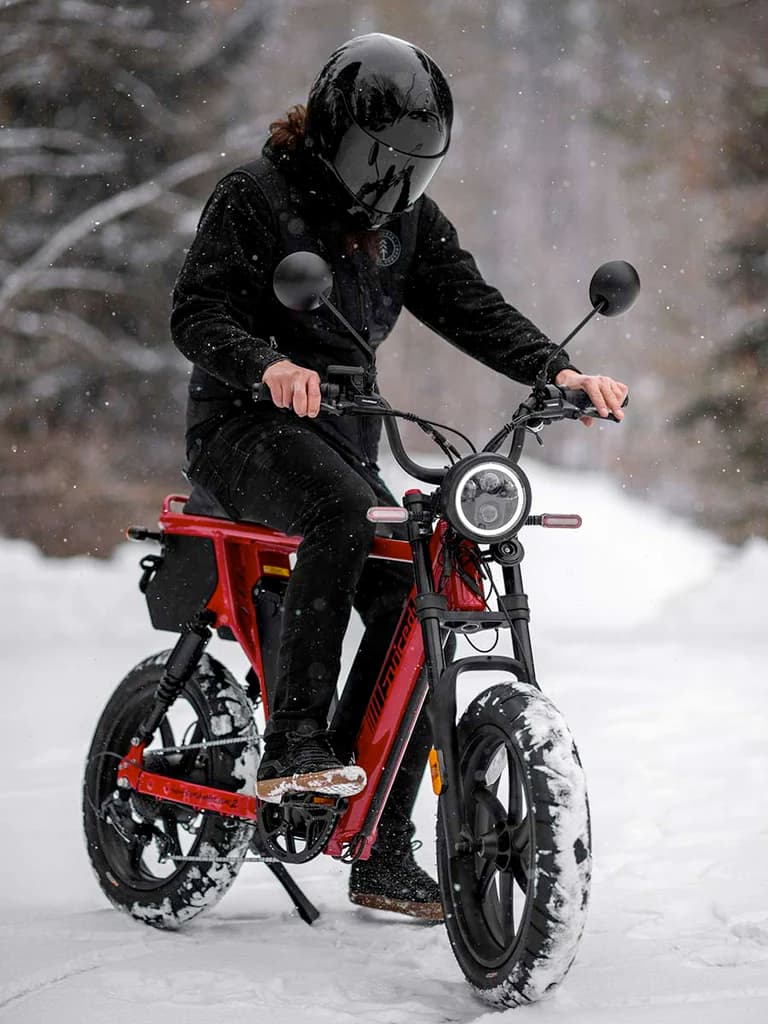
The joke (with some truth to it) has always been that a cheap alternative to studded snow tires is a handful of zip-ties wrapped around your tires, but now there are actual products with zip-tie functionality that are designed to lash onto regular tires and offer a cheap alternative to studded tires. , but you can just wrap them around twice on bike tires. It’s sure to do a number on your ride comfort when you get back on the pavement, but it will be much better than smooth rubber on ice. Just don’t consider it a long-term solution… and don’t try it if you have rim brakes!
2. Lower Your Tire Pressure
Reducing tire pressure increases the contact area between the tire and the snowy surface, enhancing grip. When you’re in snow, reducing tire pressure is the simplest and easiest way to get more traction for free.
Be careful not to go too low, as this can cause pinch flats, especially if you hit a hard obstacle hidden under the snow. On fat tires, you’ll likely want to avoid going below 5 PSI unless you know you don’t have any obstacles around. On mountain bike tires, staying above 10 PSI in the snow is a good rule of thumb.
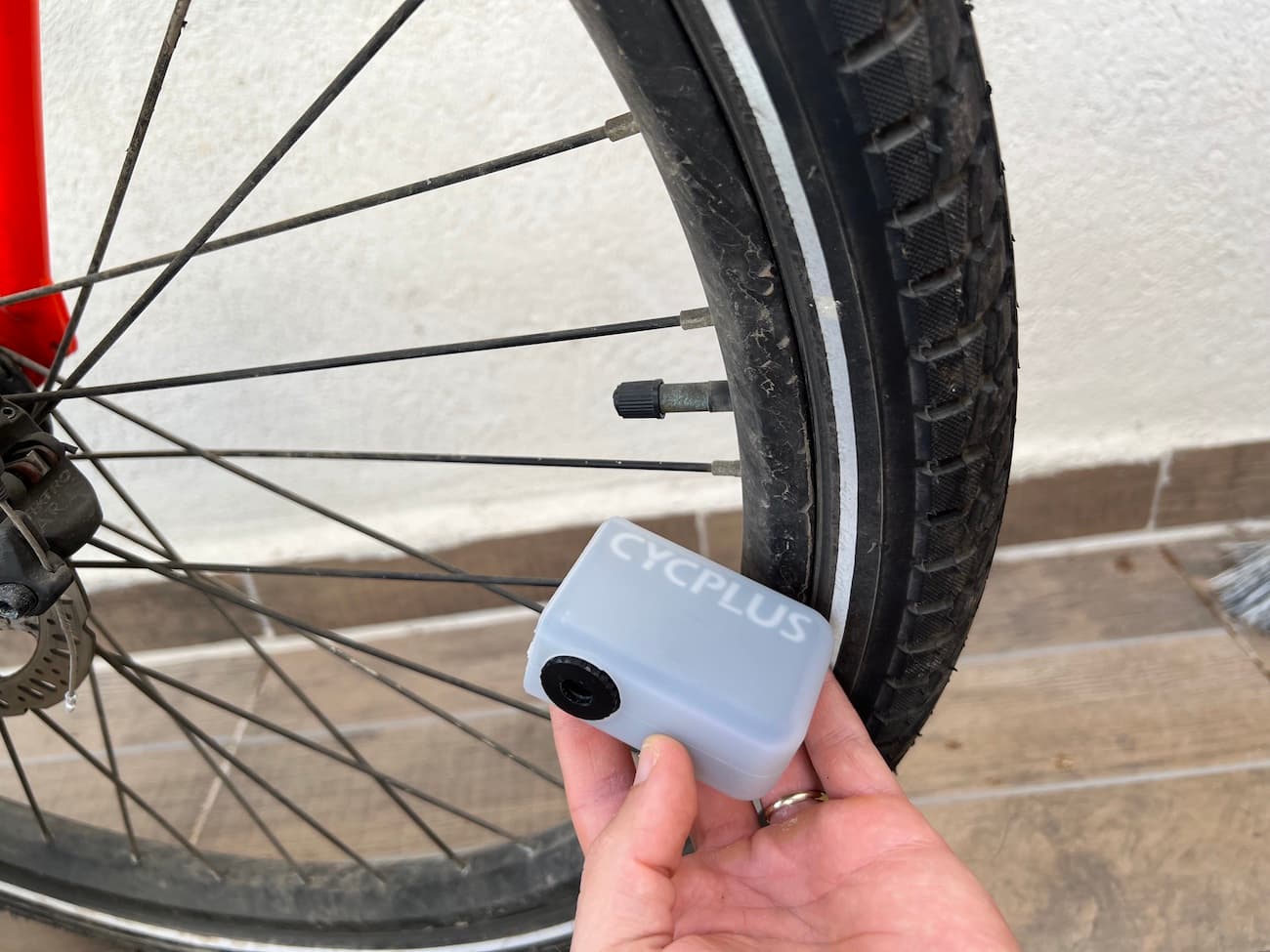
You also might want to carry a small electric pump to increase your pressure when you return to the road. I tested out that you can forget about it in your pocket!
3. Adjust Your Braking Technique
In snowy conditions, braking requires extra care. Avoid sudden stops, and start braking earlier than you would on dry pavement.
Use both front and rear brakes evenly to maintain control. When in doubt, favor your rear break though. You can slide your rear wheel easily, but your front wheel locking up can lay you down sideways in an eye blink!
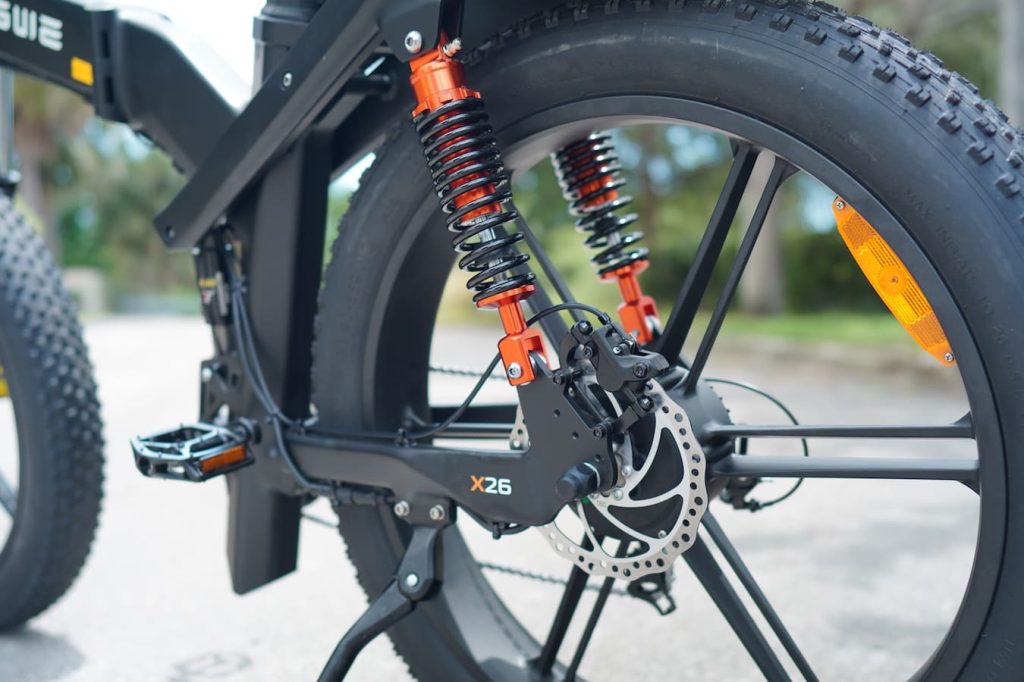
4. Reduce Speed
High speeds and slippery surfaces don’t mix well. Ride at a slower, controlled speed to react quickly to unexpected obstacles or slippery patches.
Trust me, when everything is covered in a white blanket of snow, you’ll feel like you’re already going faster anyway!
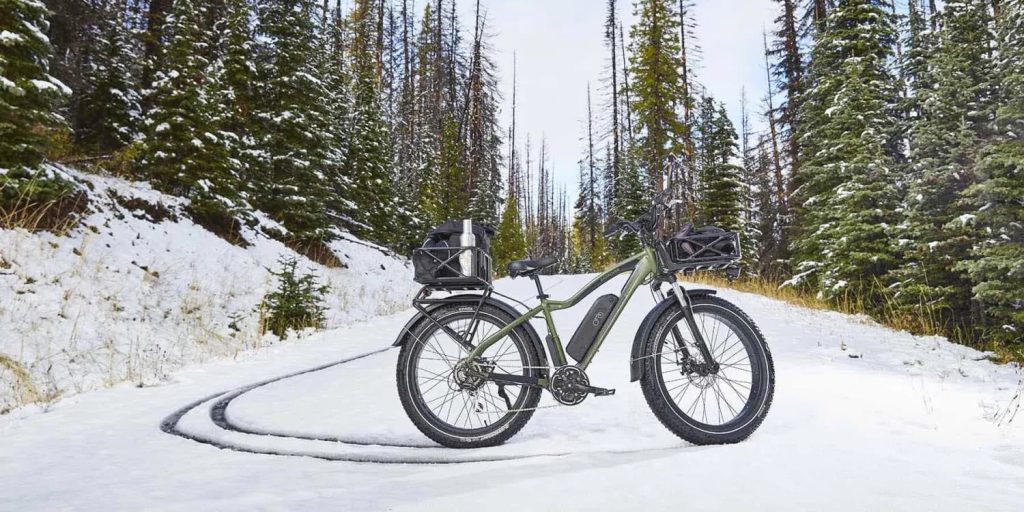
5. Use a Lower Assist Mode
High power modes can cause the rear wheel to spin out. Using a lower assist mode on your e-bike helps maintain traction, especially when starting from a stop or climbing hills.
If you’re riding with the throttle, be sure to both engage and release it gently. We often get into the bad habit of treating our e-bike throttles like an on/off switch since dry pavement has all the traction we need and most e-bikes can’t spin the rear tire. But when it’s snowy and icy out, you’ll find that sudden acceleration or chopping the throttle before braking can both result in loss of traction.
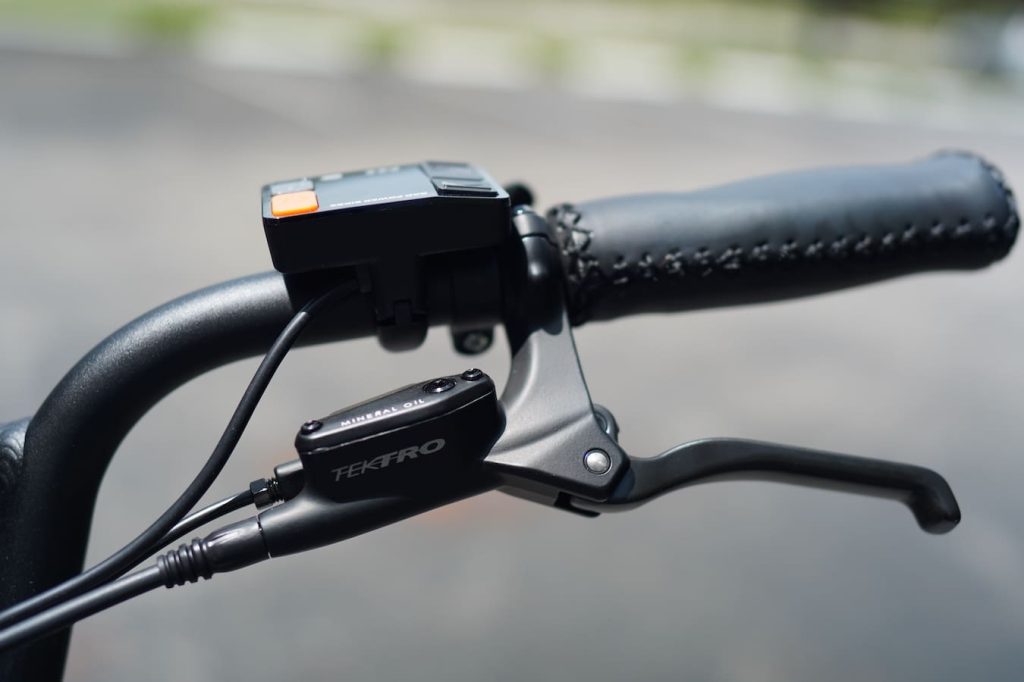
6. Keep Your Battery Warm
Cold temperatures can reduce battery performance. Store your battery indoors when not in use, and consider insulating it with a battery cover when riding in very cold conditions. Never charge your battery when it is below freezing (32ºF or 0ºC).
Several companies make their own battery sleeves out of neoprene rubber that help your battery retain its working heat to last longer on rides in sub-freezing temperatures. There are also that may work for you if your manufacturer doesn’t have their own.
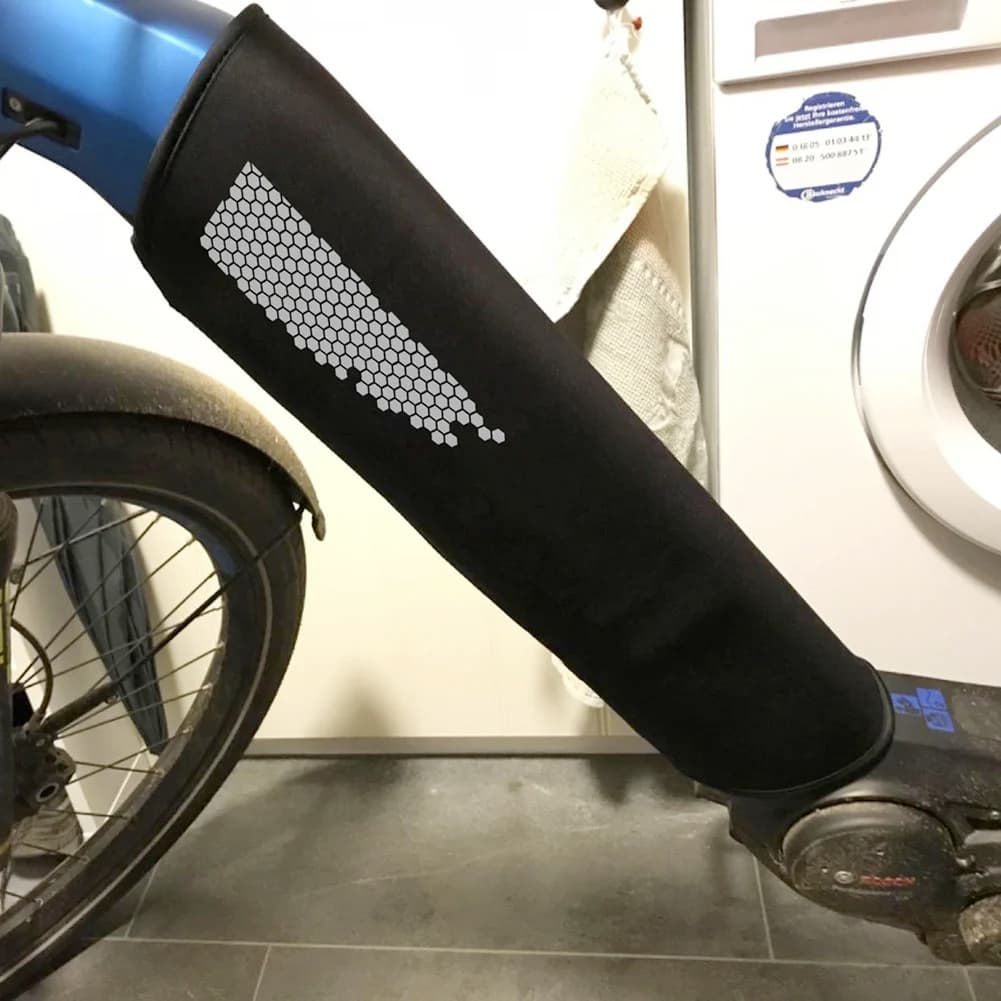
7. Dress Appropriately
Wear layers to stay warm, and don’t forget waterproof outerwear. Proper gloves and boots are essential to keep your extremities warm. are another great hack that allows you to wear thinner gloves to work the brakes and shifters while still keeping your fingers warm.
Also, consider wearing a balaclava or a thermal mask to protect your face.
In snow riding, I will often wear a full-face helmet like a motorcycle helmet. With a scarf or balaclava keeping my neck warm, I can tuck the top of it into my motorcycle helmet and keep my face toasty.
Ski or snowboarding helmets can also be a great way to keep your ears warm without covering your entire face.
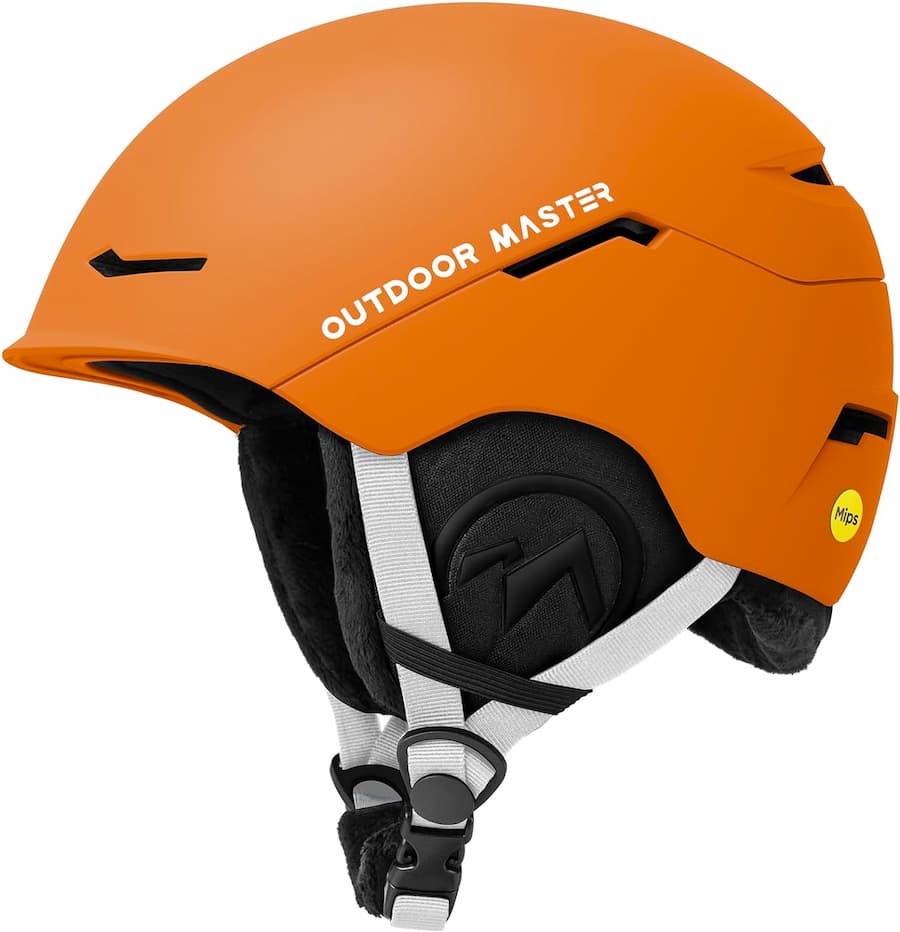
8. Be Visible
Winter days are shorter, and visibility can be poor. Use lights and reflective clothing or accessories to ensure you are seen by other road users.
Bright colors are more important than ever in the winter, and a is a simple and cheap way to be more visible to car drivers while you’re in an unprotected bike lane.

9. Plan Your Route
Avoid roads that are likely to be icy or heavily covered in snow. Stick to paths that are cleared or have less traffic.
I will sometimes choose longer routes that keep me off main roads so I don’t have to worry about car drivers who are having their own tough time with the weather. The last thing I want is someone who doesn’t know how to drive in snow making it harder for me to ride my bike in snow.
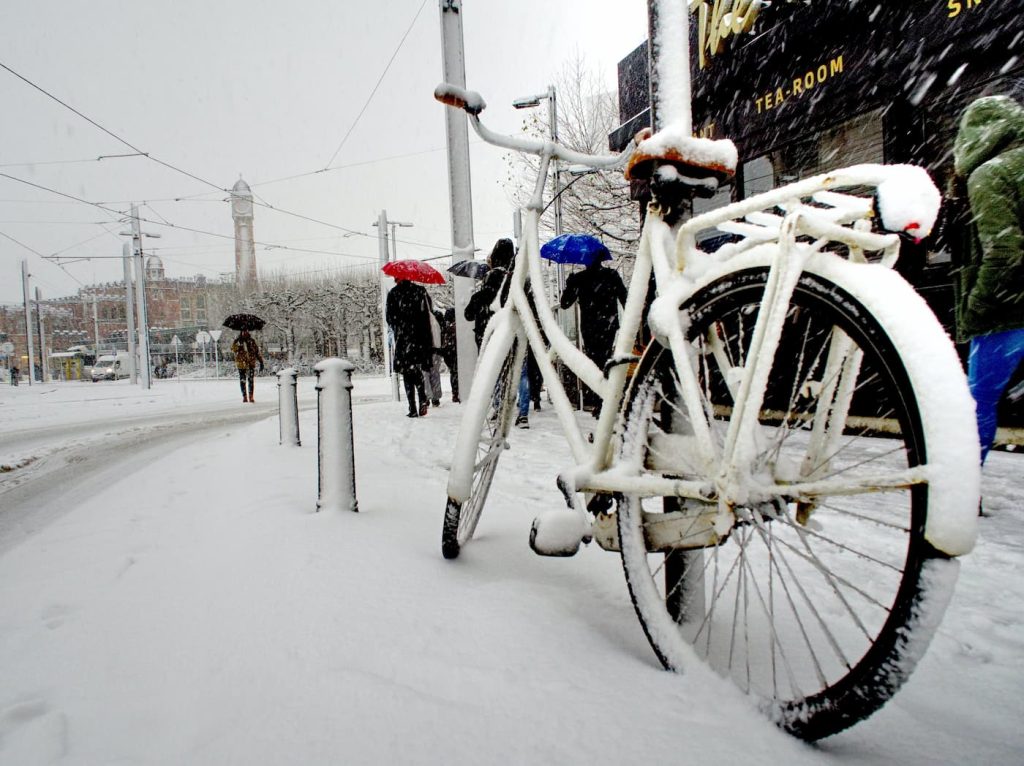
10. Regular Maintenance
Snow and slush can cause rust and corrosion. Clean your e-bike regularly, paying special attention to the chain and gears. A bit of road salt on your chain can turn it an angry shade of reddish brown after just a few rides if you’re not careful about cleaning it off.
Lubricate your bike’s chain and gears frequently to prevent damage from salt and moisture. Switching from a to a in the winter is a good idea, too.
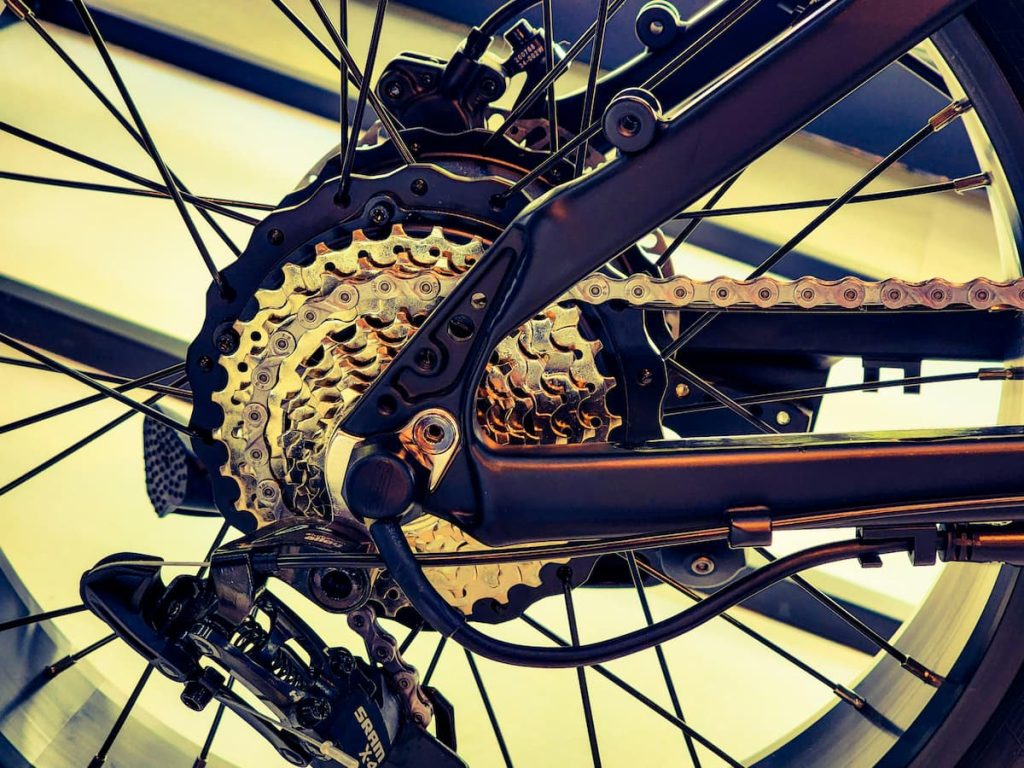
Riding an e-bike in the snow can be a fun and refreshing experience, especially after a hot summer of sunny rides. And as snowy winters become less snowy thanks to our irresponsible environmental damage, we should take every chance we get to ride in snow while it lasts.
But as fun as it can be, winter riding is a unique challenge requiring extra precautions.
By following these tips, we can enjoy the snowy scenery while keeping safety as our top priority. Remember, every ride is an opportunity to explore and enjoy, no matter the weather!
Author: Micah Toll
Source: Electrek



